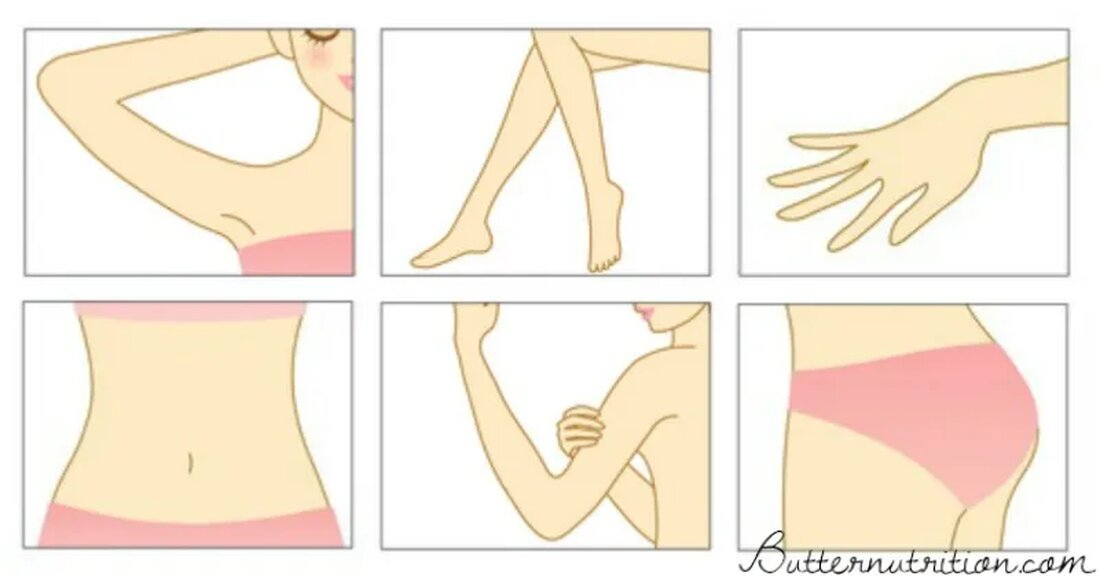How your body gives you clues about your nutritional strengths/weaknesses
Different Signs of Possible Nutrient Deficiencies Recognizing your body's signs and signals can be very informative in identifying possible nutrient deficiencies. Here are some common signs: Pale lower eyelids and pale color under tongue If your lower eyelids and the underside of your tongue are pale, it may indicate iron deficiency and/or anemia. Especially if you also experience sensitivity to cold and dizziness. Your doctor can easily determine what your iron level is by doing an iron profile with ferritin measurement (iron stores). Low body temperature A body temperature of less than 97.8 degrees when you wake up in the morning and less than...

How your body gives you clues about your nutritional strengths/weaknesses
Different signs of possible nutrient deficiencies
Recognizing your body's signs and signals to identify possible nutrient deficiencies can be very insightful. Here are some common signs of this:
Pale lower inner eyelid and pale coloring under the tongue
If your lower eyelids and the underside of your tongue are pale, it may indicate iron deficiency and/or anemia. Especially if you also experience sensitivity to cold and dizziness. Your doctor can easily determine what your iron level is by doing an iron profile with ferritin measurement (iron stores).
Low body temperature
A body temperature of less than 97.8 degrees when you wake up in the morning and less than 98 degrees during the day indicates a slowed metabolism. When there is a cellular energy deficiency and there are not enough nutrients to support the thyroid in producing energy (converting T4 to T3 - active thyroid hormone in the liver), then metabolism slows as the body adapts to survive longer on less food. One of these adaptation mechanisms is to lower your body temperature so that you can survive longer with less energy. It's similar to when you can't pay your heating bills and therefore have to lower the room temperature!
Low pulse
A low heart rate can sometimes indicate a chronic cellular energy deficiency due to insufficient food and/or nutrient intake. By slowing your heart rate, your body can survive with less energy. The ideal heart rate for a high metabolism is 75-85 beats per minute.
Lactose intolerance
If you have lactose intolerance, it is likely that your metabolism is slowed and you have a low body temperature. A slowed metabolism means less efficient digestion, indicating that digestive juices have been reduced to conserve physical energy (hydrochloric acid, digestive enzymes - including lactase).
Nails
If your fingernails grow slowly or not at all, or are thin and brittle, this could indicate problems with nutrient absorption, low stomach acid, or a nutrient-deficient diet. If you have white spots on your nails, it could mean your zinc levels are low (and low stomach acid because of zinc).
skin
If you burn easily without sunscreen, you may be lacking essential fatty acids and calcium. It is also possible that you absorb enough calcium, but lack the necessary accompanying substances for calcium absorption and absorption. If you have bumps on the back of your arms, it may indicate a vitamin A deficiency.
Body
If your legs cramp when you rest, it may indicate low calcium levels. If your legs cramp when you exert yourself, it could be a sign of a vitamin D deficiency. If you suffer from tension headaches, your fatty acid and omega-3 levels may be low (a headache is not a lack of aspirin).
Body odor
If you have unpleasant body odor, this may indicate a magnesium deficiency. You can learn more about reversing magnesium deficiency here.
constipation
Chronic constipation may indicate low thyroid function, food allergies/intolerances, a nutrient-poor diet, low stomach acid, or sluggish bile flow.
stomach
Chronic bloating and indigestion can indicate low stomach acid, while morning sickness can be a sign of low B vitamin levels or poor fat digestion that causes sluggish bile in the gallbladder.
Tongue
Tongue viewing is a diagnostic method popular in Ayurvedic and Chinese medicine and is used as one of many simple diagnostic techniques to understand health conditions without having to undergo expensive medical tests. How is the condition of your tongue? Here are some tips:
- Normal: leichte Rötung/rosa Färbung mit einer dünnen weißen Beschichtung
- Geschwollen: Milzschwäche
- Geriffelter Rand/Abdrücke der Zähne an den Rändern: Schwache Verdauung, Nährstoffmangel
- Rissige Zunge: Hitzeüberschuss
- Lila Zunge: Stagniertes Blut
- Rote Zungenspitze: Stress
- Blasse Zunge: Blutmangel
- Starke Beschichtung: Schlechte Entgiftung
Please note that it is always better to get nutrients from food and not supplements! Eating a nutrient-dense diet is a great way to boost your metabolism!

 Suche
Suche
 Mein Konto
Mein Konto
